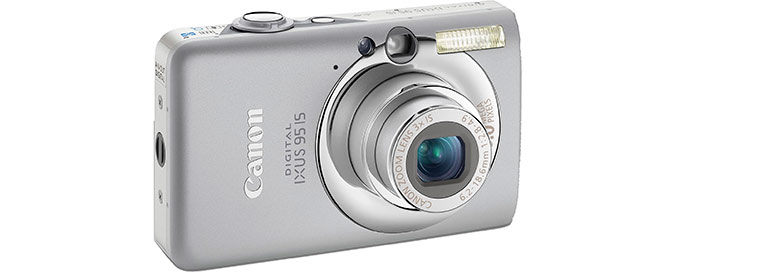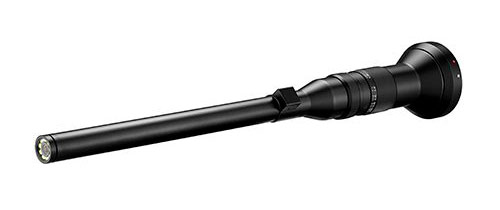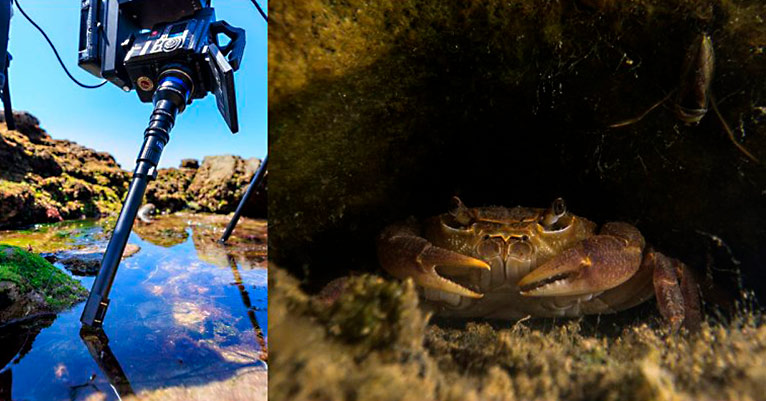22 Sep The Future of Macro Photography Camera and Lens Innovation

Tech driven sectors are usually evolving fast, with the mobile phone market serving as the perfect example with yearly model updates and newly added features.
The camera sector is similar, even though innovation and model update cycles are a bit slower (yet still frequently).
With Macro Photography being a niche and highly specialised market within the broad photographic sector, innovation here is very focused and at the same time less budgeted than other fields.
In the last 5 years macro photography has gained a lot of track and became considerably more popular, also triggered by the COVID-19 escalations that forced people to stay home and look for alternative hobbies suitable to spend time in the garden and neighboring parks or nature in general.
Nowadays every camera brand has dedicated macro lenses and new technologies supporting macro photography have been implemented even in beginner camera models.
Third party manufacturers offer plenty of gear for macro, from mobile phone lenses, to diopters, specialised flash systems and many, many more.
Innovation in the sector is clearly visible, bringing forth specialist lenses like the Laowa probe lens, being one of the most prominent examples.
So, where do these developments lead, how much potential for innovation is left in the macro photography sector and how does the future of macro photography gear look?
What will the perfect macro photography solution (i am not calling this “camera” on purpose) in 5 years look like?
What will it be capable of?
The perfect camera solution for macro photography
As usual this is my personal opinion and aside from technical considerations, I also reflect on the well over 10 years that I photograph the tiny world to get an idea of what the perfect solution for macro photography could look like.
A perfect macro photography solution (or camera) would ideally enable me to photograph from infinity settings up to high magnification of not only 1:1 but let´s say 5:1 at least.
This guarantees to get even small creatures like jumping spider or even mites to almost fill the frame, depending on the sensor format obviously.
What I want is as much magnification as possible and great depth-of-field at the same time.
Which leads to the second aspect: the sensor.
While a crop factor is beneficial for high magnification macro photography, image quality often is a bit inferior to full frame sensors for example.
A crop factor sensor with high megapixels/resolution would be the best of two worlds.
On the software side, we obviously want all the nifty features like focus bracketing, focus stacking, high resolution modes and whatever you could come up with.
All of those neatly organized in spearate folders on the memory cards of course.
As I want to carry the camera in the field and often photograph under challenging conditions, it should be lightweight, compact and resistant to weather.
My current OM-1 II ticks all these points but I´d not say no to an even more compact camera model.

Regarding lenses I would need a range of dedicated macro lenses covering wide angle, medium range like 30mm, 50mm, 60mm and also a longer macro lens like a 90mm or 100mm.
If that range and magnification would be covered, offering great image quality and decent sharpness at the same time, even a zoom lens would be fine – though this is currently impossible due to the glass elements that would be needed.
Imagine one of those compact cameras from the 90s with the fixed zoom lens – I´d love that concept, if it offered the above mentioned.

Having the opportunity to add additional tools, like flex arms or clamps via threads, and attach dedicated macro lighting and diffusion solutions, would make this a highly specialized tool – just like some sort of hybrid from a camera body and a smallrig cage for example.
If I take a look at my current mobile phone (which is the Xiaomi 15 Ultra), I have a fun super macro mode for the phone´s camera.
That´s handy as I have my phone with me almost all the time.
Actually, my perfect macro camera setup would not be much bigger than said mobile phone, ready to be taken with me at any time and anywhere I go.
No more missed opportunities.
A TG-7 goes in the right direction but it lacks both image quality and lighting+diffusion to fully substitute my OM-1 II macro setup.
How digital cameras have evolved in the past years
The core driver for camera body updates is still sensor development.
Megapixel count raise still counts like it did 10 years ago and better image quality is the ultimate goal.
Systems that assist for this, like image stabilization and auto focus, have also been evolving constantly.
Just recently global shutter was the latest buzz.
In summary cameras have reached a certain state where photgraphic results are often beyond what consumers actually need.
Quality is an almost overflowing luxury.
Gathering one computational feature after the other, cameras have become multi-use-tools that guarantee great results in all fields of photography.
Personally, I call my OM SYSTEM OM-1 Mark II the swiss army knife of wildlife and macro camera setups, in respect to these thoughts.
While I primarily use it as a tool for macro photography, which has time saving features like focus bracketing and focus stacking on board, I can also shoot in bad lighting situations, indoors, thanks to the image stabilizer, and I can also use built-in ND and GND filters to get me creamy looking waterfall, if I find one.
I am convinced that this is the way to go – making digital cameras multi-tools even more than they already are.
What are the current trends and innovations in the macro photography sector?
With focus bracketing and focus stacking being the main software-supported features that macro photography benefits from a lot, any camera that has these is a great choice already.
There is still room for improvements in these computational features, though.
Latest developments in AI will most probably also help to perfect these even more in the near future.
At high magnifications lighting is an important factor, so naturally new flash and diffusion solutions also play a vital role in the hunt for the perfect macro photo.
As the main ingredient to sharp and highly detailed macro photos, the lens is another important aspect.
However, nowadays every camera brand has dedicated macro lenses with different focal lengths in their line up with some even offering specialist lenses.
Third party brands even go a step further and come up with true niche products (which are highly welcomed).
This is actually where I see the most innovation in the coming years and I also hope that the main camera brands adopt this trend and invest in specialist lenses and niche markets a bit more.

The Laowa probe and periscope lens, for example, has found its way into TVC and advertisement production quickly, offering a unique POV in videography, that is not limited to classic macro photography/videography anymore.
It also shows how these creative products can open up new markets and break away from the niche.

Conclusion
The trend is there – the macro photopgraphy niche has been growing and is still growing.
In the future we will most probably see super compact multi-purpose solution camera bodies and a specialist lens here and there.
If the road leads up to the development of a hybrid that sits somewhere between a camera flagship mobile phone and a true digital camera, we will be presented with a true swiss army knife.
This will be a camerasystem that can do macro photography beyond our imagaination, from 1:1 up to high magnification, easy to handle and at the same time also having all those features on board that you would need for other fields of photography.
There is still space for the flagship pro cameras and the classic consumer cameras, but the demand for an all-in-one solution with top notch quality and features is definitely there!
It will be interesting to see what the main movers in the sector think of that.
However, without the will to innovate and also invest, this perfect hybrid will not come to life as early as I wish to.
The consumer camera market is unfortunately not about offering the best camera solution as an all-in-one model, but to spread different features and levels of quality accross several price ranges to broaden both the market and the sales.
From a technical perspective, even low level entry cameras should offer exceptional image quality and features nowadays.
What´s your thoughts on this?
Please share in the comments and let´s discuss.
Sign up for the newsletter mailing list & free ebook

Did you enjoy these tips and want to learn more or improve your macro photography skills?
Stay up to date with new blog posts, reviews and tutorial- and ebook-releases.
Sign up below to get notified when the free edition of my ebook
‘How to master spider & insect macro photography’ is ready for download.



Bart Telling
Posted at 13:57h, 20 OctoberThanks for your opinion. I am looking for a camera cage or an other solution which makes it possible to turn your upside down hanging camera in a tripod. I have a EM1 Mark III with a 60 mm macro objective. I want the camera in normal position. I didn’t like making photo’s with the camera operating upside down. Who have a solution. ?
wildmacro-chris
Posted at 23:42h, 20 OctoberHi Bart, which camera body are you using, regarding the cage.
If you are using OM-1 or OM-1 II, you could get the smallrig cage – which is discontinued but you can still find it in online shops sometimes or get a used one maybe. It fits both cameras, it´s a great cage, I think and if i remember correctly, it should also have an 1/4″ thread on top.
Check it out here: click.
If I may ask, why do you need to turn your camera upside down? Because you need the flash from below?
Maybe there´s a different solution/approach but I´d need to know what you are photographing.
Bart Telling
Posted at 11:53h, 21 OctoberDear Chris. I have an OMD EM1 Mark III. The cage you advise is compatible with my camera. If I make macro photos I have two methods. First is flash on camera with diffuser. That is no problem. Second one is from a tripod near the bottom. In that case my Benro tripod gives the possibility to turn the legs of tripod and hang your camera on center console.near the ground. In that case you camera is upside down and that works not fine. So I am looking for a possibility to connect the camera on topside. If I look to the cage i could put an ARRI LOCATING TOP HANDLE ON IT AND PERHAPS i could secure an arca swiss plate on it. What do you think. Third method is a simple beanbag. Best regards Bart